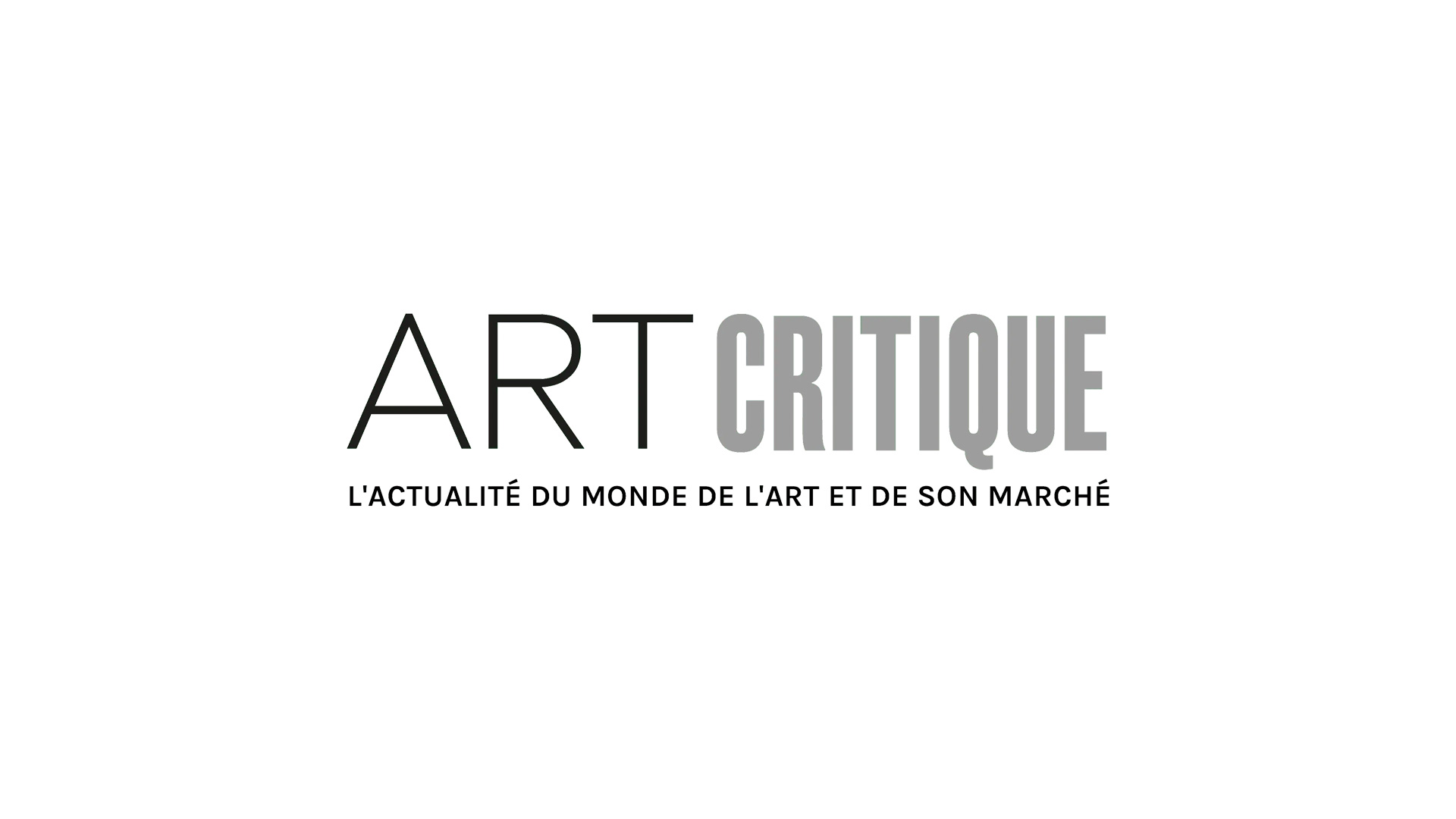When used well, an artwork can add volumes to a movie. In SKYFALL, James Bond first meets Q at London’s National Gallery. The pair sit in front of JMW Turner’s The Fighting Temeraire (1839) – you also catch a glimpse of Joseph Wright of Derby’s An Experiment on a Bird in the Air Pump (1768) and Thomas Gainsborough’s The Morning Walk (1785) – while Q describes the painting’s story, the new steam-powered vessel pushing the old war ship out to harbour to be sunk, and how it sets a melancholic scene. Although the event never really happened as shown in the painting, Turner’s scene comments on how Bond, an older spy, is being pushed out by newer, modern spies with their gizmos and gadgets and calls into question Bond’s position. That scene is made more poignant by Turner’s work, so any old painting wouldn’t have fit the bill.
Other movies, like Woman in Gold or The Thomas Crown Affair, and documentaries, even, like Tim’s Vermeer, have centered around artworks. In addition to that, is all the art that sets the scene for movies and tv shows. Art fills out a character’s persona, shows their interests, gives you a glimpse into what they like and dislike. Robert Longo’s works from his 1993 series Men in the Cities add to Patrick Bateman’s social yet cold and unexpected lifestyle. In Downton Abbey, the Crawley family are surrounded by masterpieces in their expansive home like Anthony van Dyck’s Charles I with M. de St Antoine (1633), which is shown in the first scenes of the first episode.
But, seeing these works, and works that you think might be a Picasso or a Rembrandt, could get you wondering: How do these works get from the walls of prestigious museums, private collections, and galleries from all over the world onto the silver screen? Turns out, it can be a tricky process.

The first thing to get familiar with when you start looking at the journey of an artwork from gallery to movie is the Copyright Term Extension Act of 1998. Or, perhaps, copyright, in general. As with any use of someone’s property, whether it be art or music, copyright can be a daunting hurdle. It’s something that helps ensure that someone’s property can’t be stolen and it’s a topic that often comes up in the arts. In 1998, a 1976 copyright law was extended through the Copyright Term Extension Act to expand the period of time after an artist’s death before work becomes public domain from 50 years to 70 years. What this means is that while an artist is alive, they have the copyright to their work, after they die, their estate owns the copyright to their work for 70 years. When those 70 years pass, the work enters public domain, meaning its copyright has essentially run out and people can use the work without special permissions.
Simple right? On paper, yes, but in practice, not always. If you’re a production company making a movie based in 1738 using artwork from the 1500s, you’re most likely in the clear. However, if you’re creating a movie that was set in 1995 and your main character has a prized work by Jean-Michel Basquiat, who passed away in 1988, you might have a few more hoops to jump through.
To navigate those hoops, there are clearance coordinators whose entire jobs are based on securing the necessary permissions to use an artwork, among other copyrightable items, that will appear in a movie or show. Sometimes, if there is a particularly difficult topic, the clearance coordinator might be assisted by an entire team of lawyers to negotiate a loan. When an artwork is critical to the story of the movie, the clearance coordinator’s job is made more difficult.

During the filming of Woman in Gold, which tells the harrowing story of a woman seeking the return of a Gustav Klimt painting of her aunt that was taken by Nazis during World War II, the copyright of the artwork at the very center of the movie, Portrait of Adele Bloch-Bauer I (1907), was owned by New York’s Neue Galerie. Running out of time during production, negotiating the terms of obtaining the rights to the work would’ve cost time and money. After a lot of research, a photographer named Manfred Thumberger, came to the rescue. Thumberger had taken high quality photos of the artwork while it was still at the Belvedere Palace in Austria, and owned the rights to those photographs. For a few thousand dollars, Thumberger sold those rights to the movie and Woman in Gold had their golden lady.
This anecdote shows that there is often more than one way to get to where a movie needs to go, so when an artwork can’t be changed, producers will contact a number of people and entities in the hopes of securing the needed permission.
Now, you might wonder how Klimt’s work was still under copyright since Klimt passed away in 1918, well over 70 years prior to the production of Woman in Gold. That’s because the Neue Galerie obtained the copyright to the work after it took in the painting when it was returned to its rightful owner, Adele Bloch-Bauer’s niece. Thus, copyright can be extended or adjusted by the estate or museum that owns the work.

Museums might own the rights to works in their collections but often, they don’t own the copyright to all the works. This brings up another misconception about copyright and ownership. Simply purchasing a work of art does not mean the buyer automatically owns the copyright to that work. Usually, unless specifically included in the sale, the copyright of a work remains with the artist. In recent years, copyright has gotten continually more intricate and each year, the laws concerning copyright morphe a little more. According to Jim Clay, a production designer, ‘It’s getting slightly out of hand.’ Clay told the Chicago Tribune that ‘If you feature a character coming out of a famous architect’s building, you have to clear that. That has become more complex. …We generate a lot more of our own images to get around that problem.’

When a movie doesn’t hinge on a specific work, set designers usually take alternate routes to fill out a set. In some cases, local or up-and-coming artists might be asked to lend art to the production. Sometimes, a that artist or even a member of the set design team might be asked to create a work that could be from a certain time period or similar to the works of a well-known artist. ‘If you can’t [afford to use fine art], you have to figure out other ways to make it look like you’re using real, good stuff,’ Ellen Brill, an eight-time Emmy nominated set director, told Artsy in a 2018 interview. A lot of times you can have your scenic painter paint something “in the style of” and if it’s different, then you can get away with it,’ If creating an artwork in the style of a work, though, it’s important to know where the line is for copyright on an artist’s works. At one time, the movie industry could just make their own reproductions of works but now, that would qualify as ‘derivative,’ and thus, would violate copyright laws.
If time is of the essence, there are also companies whose entire purpose is to provide rentable art to productions that are completely free of any copyright issues. Naturally, these services can come at a greater cost because of their convenience but when you only have a few days to get things together, they can be an incredible resource. Such galleries can be found around the world with a large concentration of them being in Los Angeles. While convenient, one down-side to this is that viewers might realize the art in two of their favourite tv shows are the same work, kind of bursting the bubble of the world created by the show or movie.
As with any rule, there are exceptions to the copyright rules. If only a small portion of an artwork is used, this falls into the category of de minimis, or ‘lacking significance or importance; so minor as to merit disregard.’ So, if only a small portion of a Barbara Hepworth or Piet Mondrian work is shown, issues of copyright might be rendered moot. Fair use is another exception. This is when copyright is bypassed by ‘any copying of copyrighted material done for a limited and “transformative” purpose, such as to comment upon, criticize, or parody a copyrighted work.’ The last exception, as noted previously, is when the necessary 70 years have passed after an artist’s death and there are no other copyrights on their work.

That, in a nutshell, is the usual process of getting art into a movie, and not facing major legal issues. Of course, there are times when these steps aren’t followed, like when Mike Tyson’s tattoo artist sued Warner Bros is 2011 when Tyson’s famous face tattoo was reproduced on actor Ed Helms’ face in The Hangover Part II. But, when done right, all the hoops jumped through add to the finished product.
So next time you’re watching your favourite movie, whether it’s a cult classic, like Ferris Bueller’s Day Off, a psychological thriller, like Stanley Kubrick’s Eyes Wide Shut, rom-com, like The Holiday, keep an close eye on the walls, and see what art fills the space.





